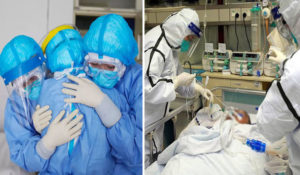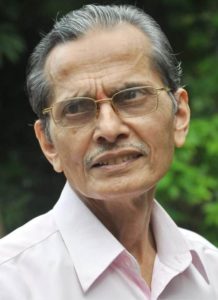How to relax and how to lift lockdown? It has to be relaxed or lifted,in course of time. Only question is when and how?


First step (stage):
This is the most important stage where in we have to aim at creating awareness in the public regarding the importance of observing preventive measures, adherence to which must be made a precondition for the relaxation or lifting of lockdown. It is compulsory that they should abide by the code of conduct or else they have to face lockdown and they only will be responsible for the suffering. Question is how long and when? In my opinion it is a lifelong process and should be imbibed in our lifestyle.
However under the present circumstances it may have to be continued for a few months at least. Afterall DO’S and DON’TS are so simple that we can easily implement them if we have a will to do it.This should be monitored by a task force at the ward level i.e at the lowermost administrative unit of Panchayath/Muncipality/Corporation. The task force should include ward member, one or two health personnel and one police constable. They should be going round the ward, round the clock and
1. Drive home the importance of preventive methods, educate the people, answer their queries and see that they are implemented without fail.
2.Warn the people about the legal consequences and the danger to the life of themselves, their kith and kin, the public in general.
3. Note down the lapses and take corrective remedies and inform the superior authorities.
There should be a coordinating centre at the Panchayath /taluk / District levels. They should supervise and monitor the reports from different units and decide to take the necessary actions. There is no substitute for precautions and preventions.
Second step(stage):
Depending on the conditions prevailing actions should be taken to identify the case isolation at home and keep a constant vigil and refer the patients to health centres.
Third step (stage)- Transport-public & private :


1.Public:
a. Buses start running strictly observing the preventive code of conduct.
b.Restricted number of buses, restricted routes and restricted number of passengers and timings may be about 10 to 15 passengers in a bus.
c. Naturally people may have to pay more but this cannot be helped those who are in absolute necessity should only travel.
2. PRIVATE:
a. Buses and other vehicles on the same principles, details to be worked out by the governing body.
3. Offices:
a.All Government offices should start functioning with restricted timings and restricted staff by rotation (If Necessary). Preventive measures should be observed with the utmost care.
b. Semi-Government Offices- Same as Above.
c. Private Offices- Keeping open is optional but they should observe the routine rules of functioning and preventive measures.
4. Hospitals:
a. All government hospitals should be given more facilities and work around the clock including doctors and staff. They should also abide by the medical rules and be compensated if necessary.
b.In the private, may be left to the decision of the owner but they should be governed by the law and professional ethics.
c. As far as possible they shouldn’t close down especially hospitals. It is needless to say while observing the discipline of prevention cost of treatment may rise but this again cannot be helped, humanitarian consideration should always be there.
5. Markets and Shops:
a. All the yardsticks and principles applicable as above.
b.Celebrations to be avoided to the maximum extent.
c.Routine rituals and prayers to be conducted at the temples without public participation and mass gatherings. So also in others worshiping places, family functions only if absolutely necessary. Observing all the precautionary methods for any adverse effect they should be answerable.
Summary:
1.Stress on prevention.
2.Relaxation of lockdown depending on the ground realities without jeopardizing public health.
3.Red, orange and green categorization may be kept in mind.


Dr.K.Ramananda Banari
Ganaraj Clinic, Manjeshwara – 671 323
Kasaragod Dist Mob: 9446297226











